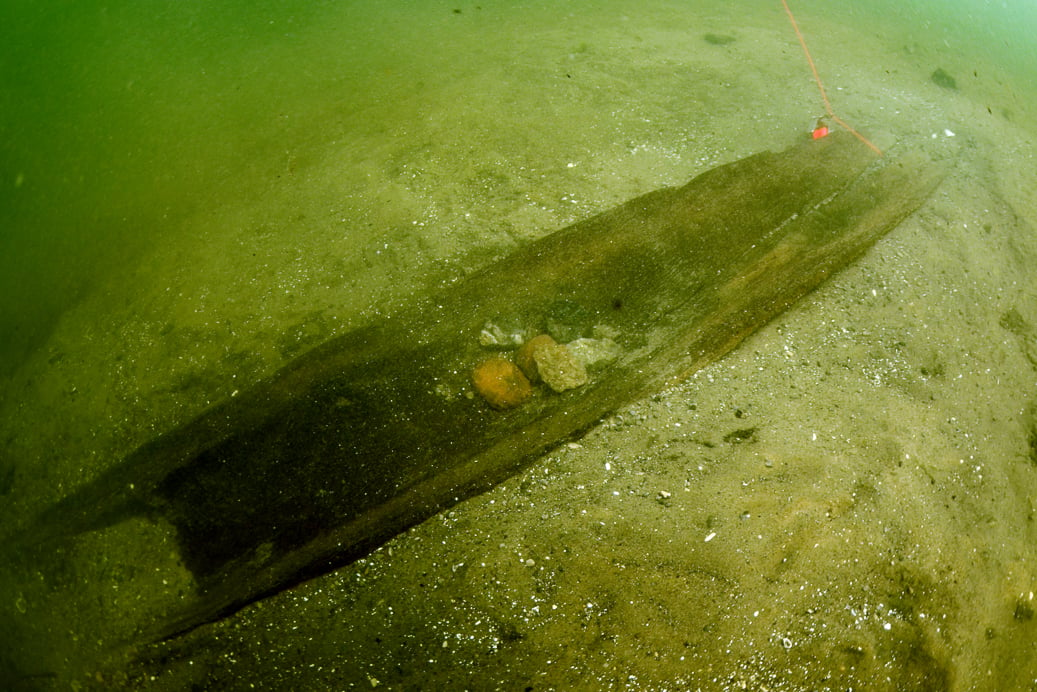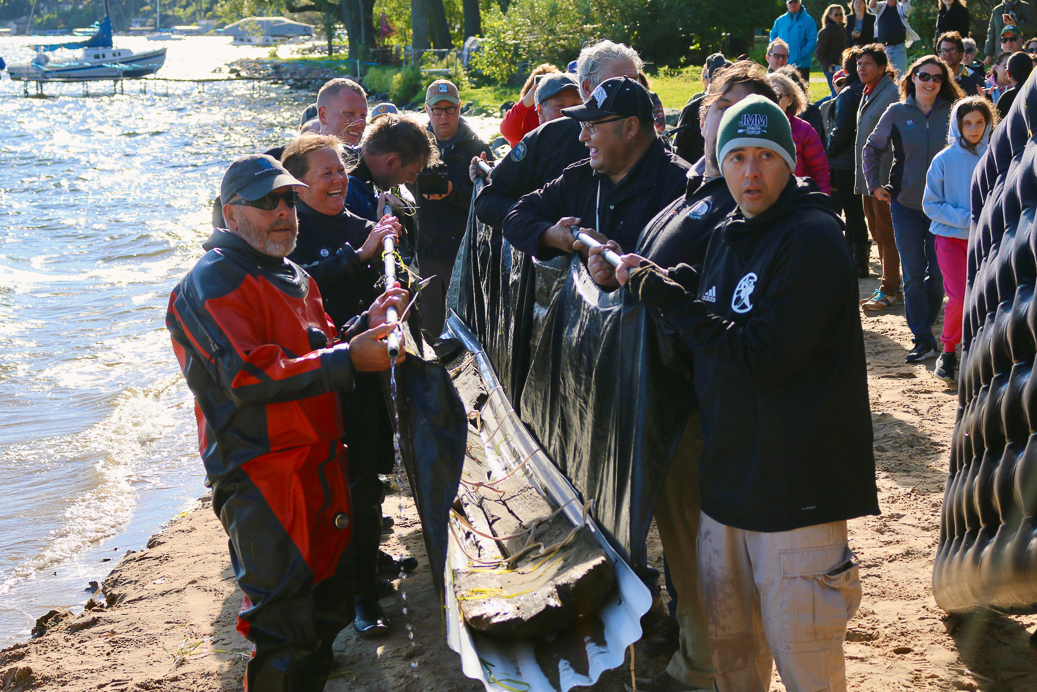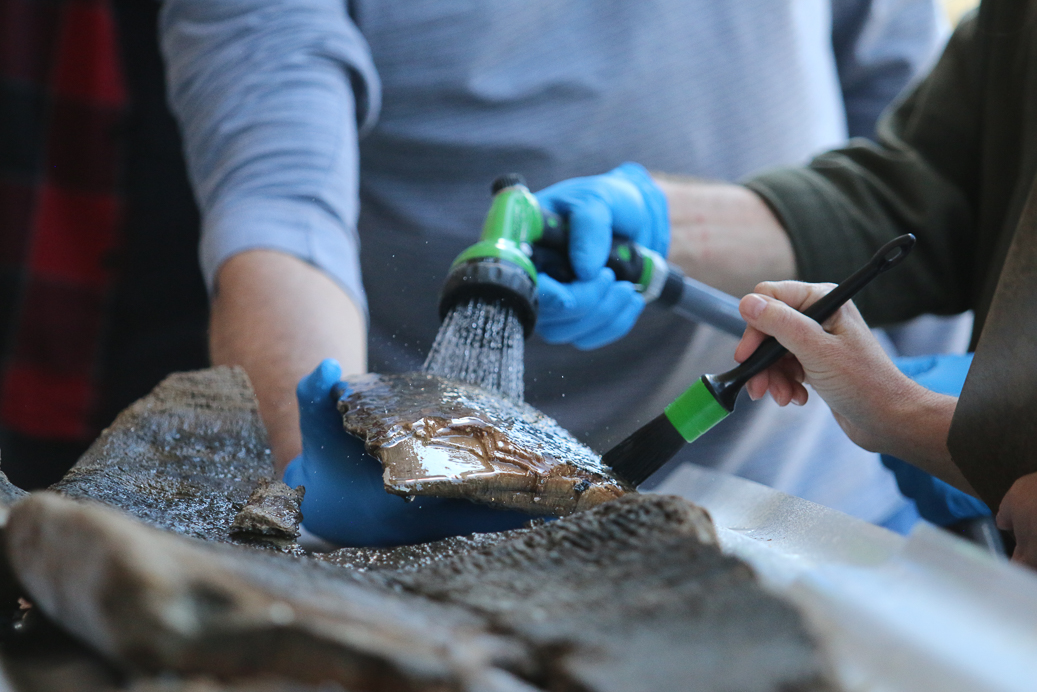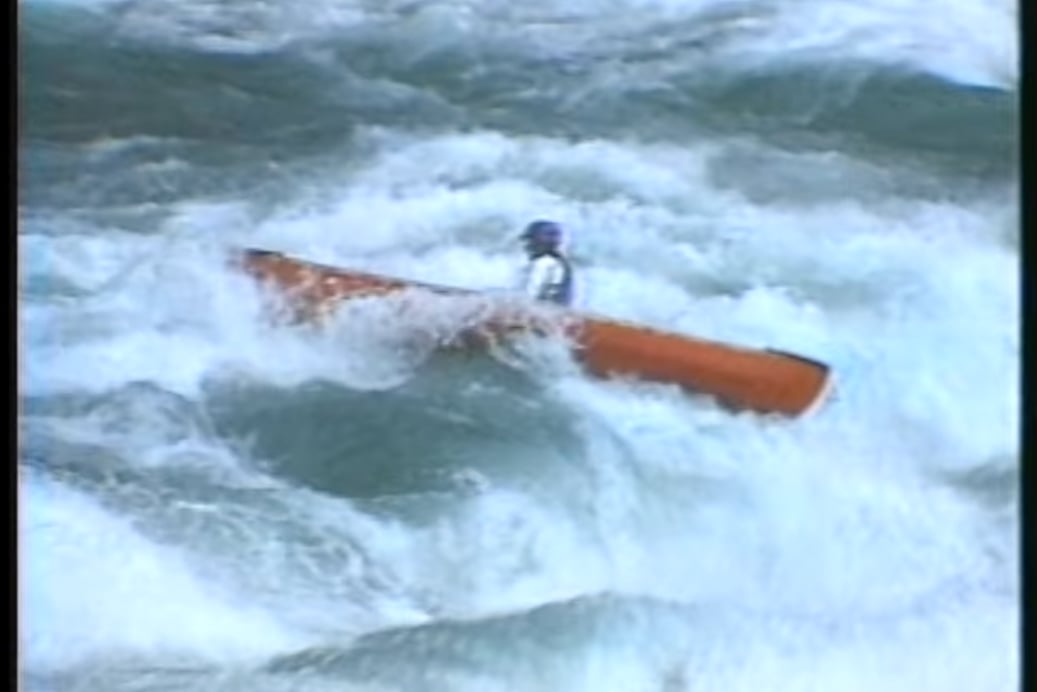Atotal of 16 ancient Indigenous canoes have been discovered beneath Wisconsin’s Lake Mendota, and these canoes are now a window into the ancient transportation. According to WMTV 15 News, the canoe cache is near a network of Indigenous trails and the canoes were likely shared by community members and stored buried in sediment in waist to chest deep water to prevent them from freezing or drying out.
In May 2024, of the 10 ancient dugout canoes were recovered from Lake Mendota in Wisconsin, ranging in age from 1200-4500 years old. While the Lake Mendota cache makes up the largest find of ancient dugout canoes, similar finds have been made throughout the entire state of Wisconsin. Now, archeologists and historians are asking paddlers to help aid in the search for archaic canoes on Wisconsin lakes and rivers.
The Lake Mendota ancient canoe cache: bury your canoe in the mud in the winter for longest use
The canoes discovered on Lake Mendota, or Tee Waksihominak in the Ho-Chunk language, are believed to belong to the ancestors of the Ho-Chunk Nation, who have lived in the region since time immemorial. The most recent canoe in the Lake Mendota cache is 1200 years old, and the oldest a 4500-year-old elm canoe— this is the oldest canoe ever recovered in the Great Lakes.
“That’s a huge gap in time,” shared Tamara Thomsen, maritime archaeologist with the Wisconsin Historical Society‘s Maritime Preservation and Archaeology program with Paddling Magazine. “In fact, we’re closer to the people in the 1200-year-old canoe than they are to the people in the 4500-year-old canoe.”

The ancient canoes didn’t end up underwater by chance. According to Thomsen, caching canoes, or storing them underwater for the winter, was standard practice in the region at this time.
“A lot of times these people were nomadic and so when the resources became scarce or the seasons changed they would move south and look for more abundance of resources… they would move and they would leave their canoes behind,” explained Thomsen. “They would take them into water about chest-deep and they would bury them in the mud and cover them with sticks and sometimes rocks and bury them in sediments.”
Burying the canoes in chest-deep water protected them from warping in the cold on land and kept them out of the way of damage from ice shoves, according to Thomsen.
“They would go out from there, wade out around, find their canoe, pull it up and get it free of some of the debris and remove the water and it would dry out a little bit and float,” said Thomsen.
Remarkably, the 1200-year-old canoe recovered from Lake Mendota still floated when put in the conservation tank.
How ancient canoes offer a window into America’s Indigenous history
Together with the Ho Chunk Nation, the Wisconsin Historical Society is searching for more canoes and clues to piece together a more complete picture of the people who lived in this area thousands of years ago. In addition to radiocarbon dating of already recovered canoes, researchers are searching the area of the Lake Mendota cache looking for arrangements of rocks and evidence of a hearth or campsite. With the high concentration of canoes recovered, all signs seem to point to a small settlement nearby.
Thomsen noted that Lake Mendota is located near a number of Effigy mounds, or earthen mounds built to look like animals or spirits. These mounds are estimated to have been constructed between 1400 and 800 years ago, a period overlapping with the most recent of the canoes.

“There has to be evidence of them being here on this ancient shoreline. Lake Mendota is a really weird situation where it’s [the water level] been raised but also in the period where the dugout canoes are represented, 1200 years ago to 4500 years ago there was a prolonged drought which lowered our lake levels almost 20 feet,” explained Thomsen. “When you look at the bathymetry of Lake Mendota, the bottom contour map of it, you can see that there’s a bench or a rim that goes around it and that’s the ancient shoreline. So we know that there are habitation sites on that ancient shoreline. We just have to figure out how to look for them and what they look like.”
Thomsen also shared that while the canoes could have been made and used for a number of purposes including fishing and transportation most certainly they were used for recreation, the same as we use canoes today.
“We have paintings from the 1500s that show people recreating in canoes,” said Thomsen. “The same things we use them for today, they were using them for 4500 years ago. If you picked someone up from 4000, 5000, 6000 years ago and you brought them here, probably the only thing they would recognize is a canoe,” shared Thomsen.
How Wisconsin paddlers can help uncover more historic canoes
While the largest cache of ancient canoes was found on Lake Mendota, ancient dugout canoes from the have been discovered throughout the state, all the way from the Brule River in Northern Wisconsin, to the southern end of the state.
“We really believe there’s a lot more,” said Thomsen. “There’s no place in Wisconsin where we don’t have evidence of a dugout canoe already being recovered. There has to be more.”

Generally, the canoes have been recovered from shallow areas and look to the casual observer like a tree beneath the water. Upon a closer look, the dugout canoe differs from a tree in that it looks like sculpted wood with bark removed, sometimes marked by burning Thomsen explained, adding that the clear water in Wisconsin makes them easier to find. Additionally, Thomsen shared that the canoes are often found in places where notable trails used to reach the waterline, noting that making of these trails are now modern roads.
“We’ve looked at over 112 canoes that have come out of Wisconsin waters,” shared Thomsen. “There has to be thousands of them but people really don’t know what they look like or what to do when they find them so we know that there’s more and we’re reaching out for help.”



